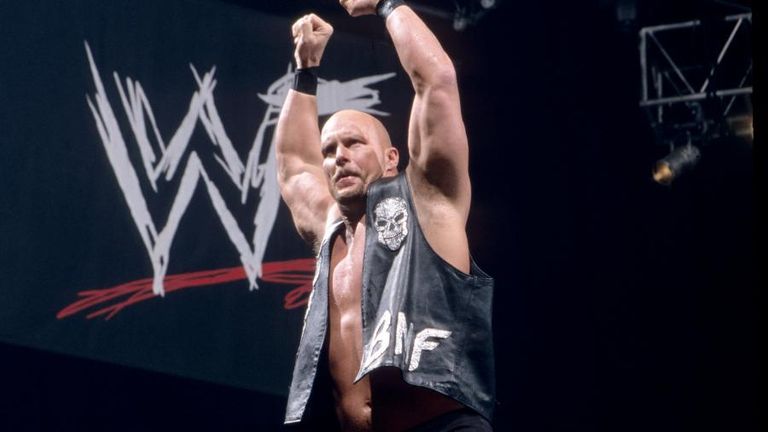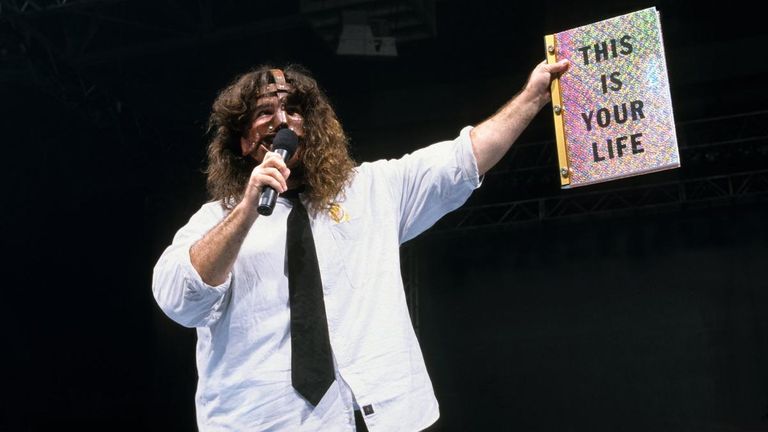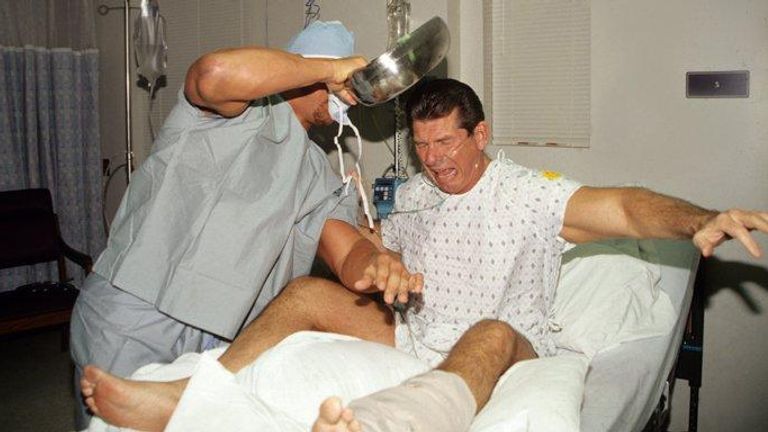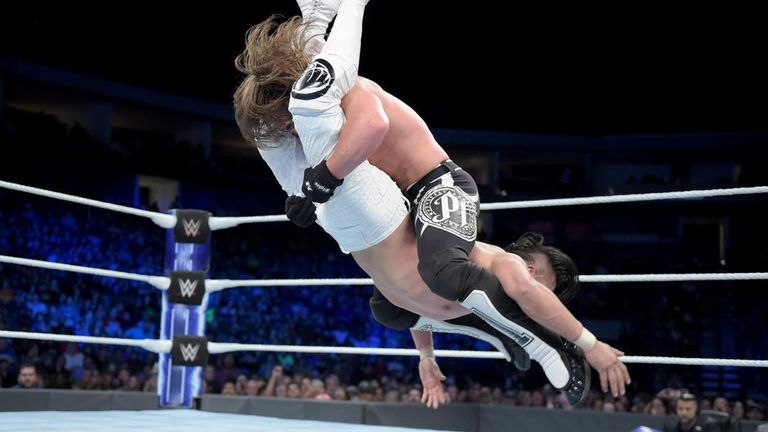WWE Analysis: Attitude Era v modern day, which is the better period?
Friday 28 September 2018 13:29, UK
One of the greatest debates in wrestling was reopened this week when WWE posted a video asking the question which was better – the Attitude Era or the modern-day product?
Was wrestling more enjoyable in the days of The Rock and Stone Cold Steve Austin, or has the popularity of that period been warped by the prism of warm and fuzzy nostalgia?
And how do the two periods in WWE history compare in terms of the entertainment taking place in the ring? Is wrestling today more accessible to a bigger audience than the more reality-based and edgy style of the late-1990s?
The issue was discussed on the Sky Sports Lock Up podcast this week, where the team was split straight down on the middle as to which era was better. We took a look at the key elements up for discussion…
Characters
There is no doubt that Austin, The Rock and Vince McMahon's on-screen persona as Mr McMahon are among the greatest characters ever created in wrestling.
They benefited from the reality-based themes of the time to take sports entertainment into a new stratosphere and none of them more so than Austin, who is the biggest merchandise seller in the history of the sport.
But what about the players outside of the top tier? As Dave Anderson said in our Twitter debate, "only the main event segments were any good in the Attitude Era; Stone Cold, Vince, The Rock and Mankind carried the load for the awful undercard."
In 2018, there is much more depth. The most recent pay-per-view - Hell In A Cell- saw two of the most established superstars of today, Jeff Hardy and Randy Orton, competing in the opening match.
Winner: Attitude Era (but only just)
Storylines
As Harry wrote on Twitter: "The Attitude Era will always come out on top, some of the things, every Monday night, we saw were just crazy and unpredictable! Best storylines and rivalries, I love the new era we've got, it's got a more edgier tone, but always Attitude Era."
And that's the debate in a nutshell. Whether you loved or you hated the Attitude Era storylines, they definitely created controversy and - as any wrestling fan knows - controversy creates cash.
Many of them are still spoken about today, either with a nostalgic glow or horrified retrospection. Few of them are forgotten.
As Oliver Roderick pointed out "AJ and Joe has been a step in the right direction", but this is a clear win for the old guard.
Winner: Attitude Era
In-ring
The matches from the Attitude Era simply cannot compete with what is on offer today, where classic American wrestling, Japanese strong style, Mexican Lucha and the submission-based British style all feature regularly on WWE programming.
Also, there was almost no women's wrestling back in the day except for a few short matches every now and then, compared to the current situation where women's matches are (almost) on a par with the men's and that division will have an entire pay-per-view to themselves at the end of October.
As John Service neatly summarised: "It very much depends on what you're looking for. If you place more value in memorable characters and star power than work rate, the Attitude Era is superior. The in-ring ability of today's roster is light years ahead of most of the Attitude Era roster though."
Winner: Modern era
Social progress
Arguably the most controversial area for analysis, it is difficult to argue that late-1990s WWF was a particularly progressive or inclusive product.
On Twitter, Katy Shawcross expressed a preference for the current era based on "less sexism", while Adam Leatherbarrow said: "They got away with a lot more back in the day whereas the current era has lots of restrictions."
Without question, WWE in 2018 has a moral responsibility to be as inclusive as possible, to their shareholders, their advertisers and to their audience. Society has changed in the past 20 years and WWE has always been a reflection of society.
Some may yearn for the old days of highly sexualised content and bad language but few could argue today's wrestling is, as Finn Balor would say, "for everyone".
Winner: Modern era
Overall
It's a tie! Strong cases can be made for either side, with the general outcome being that the current era is better in terms of in-ring entertainment while the Attitude Era had the more memorable characters and storylines.
In some cases, these were memorable because they pushed the boundaries of what was acceptable and such content would not be possible in these more progressive times.










